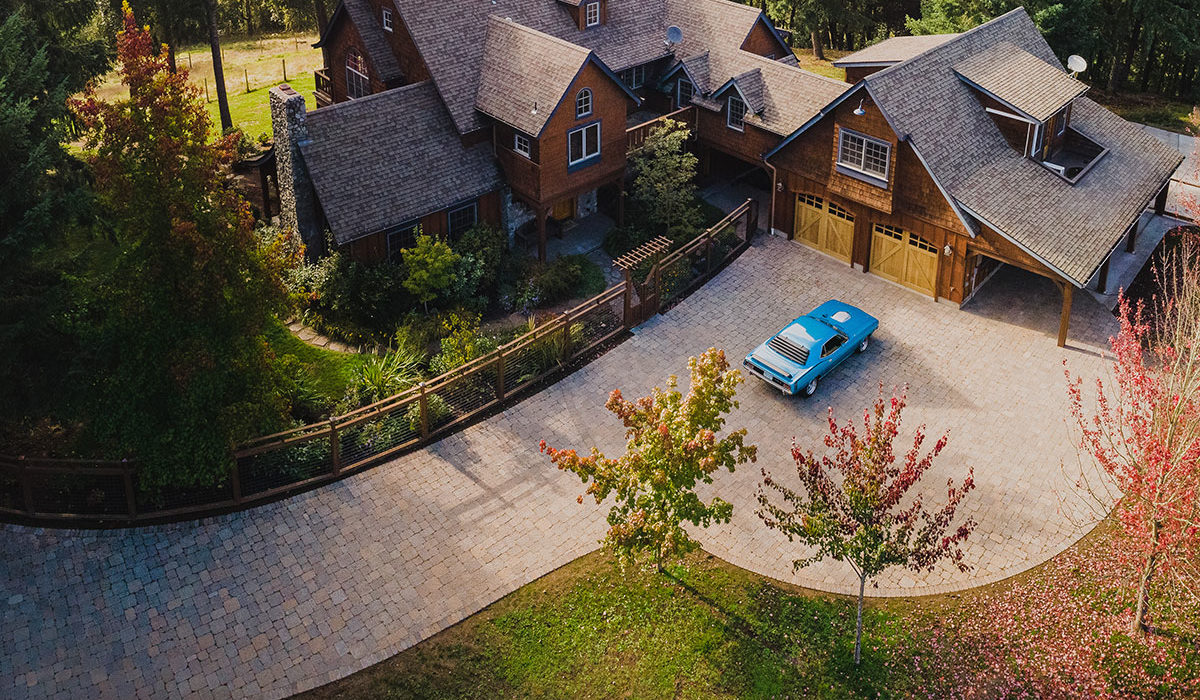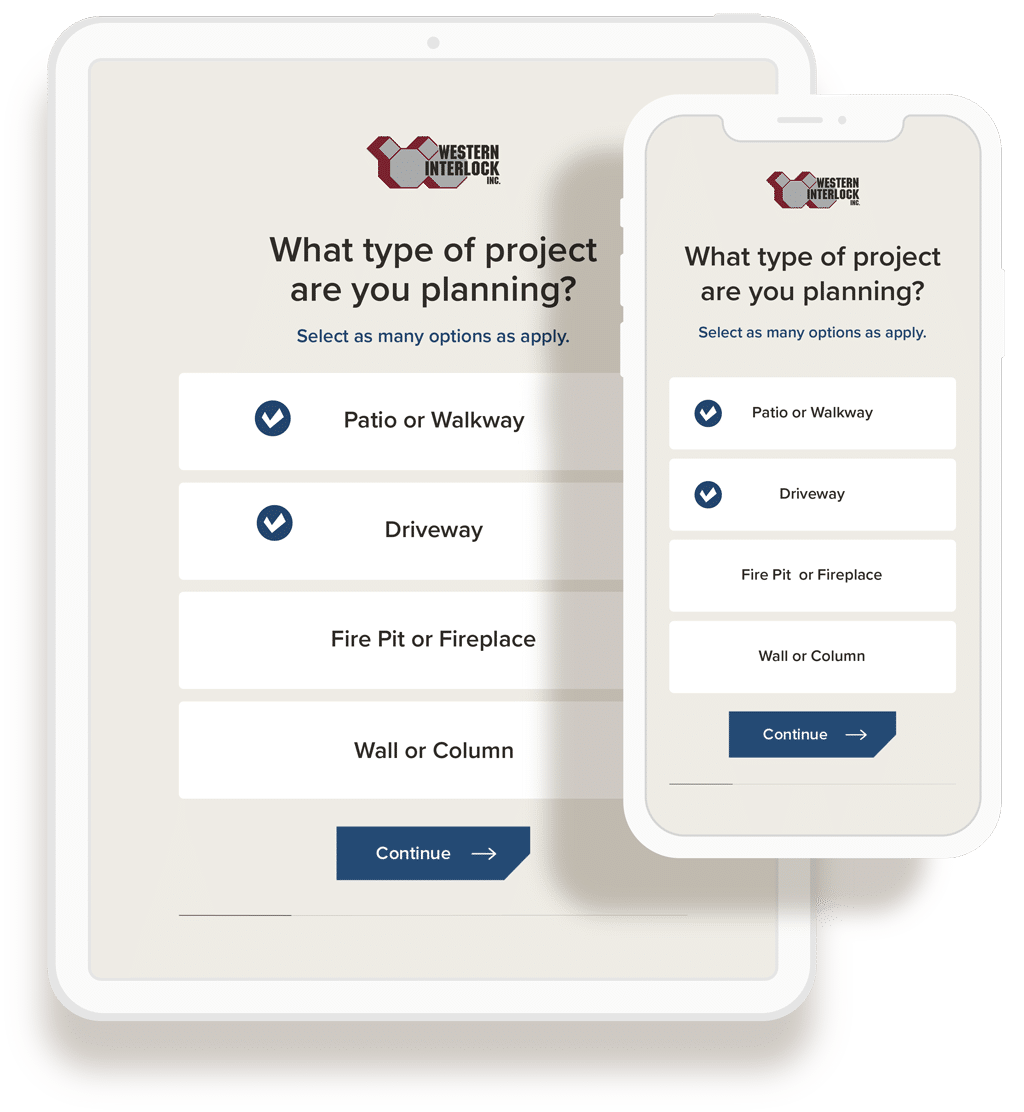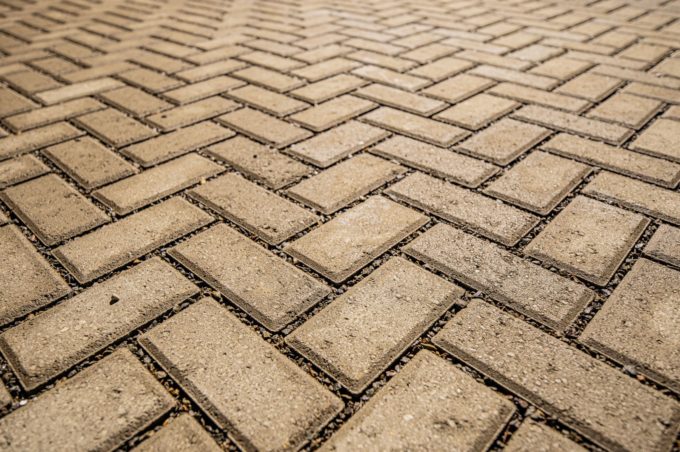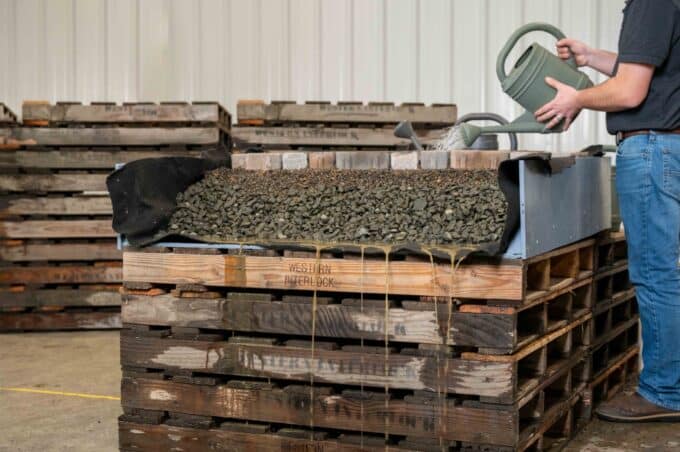If you’re reading this, it’s likely because you’re considering installing or repairing hardscape on your property. We wrote this article to help you understand more about hardscape: what it is, how it works, and why you should care.
At Western Interlock, we make hardscape products such as paving stones, retaining wall systems, fire pits, and more. Our Northwest-based, family-owned company has been serving DIYers and contractors since the early 1990s, and we’re just getting started. In this article, we’ll share with you everything we know about hardscape.
Home Hardscape examples
You can create almost anything with hardscape materials, from paths to patios and fences and benches.
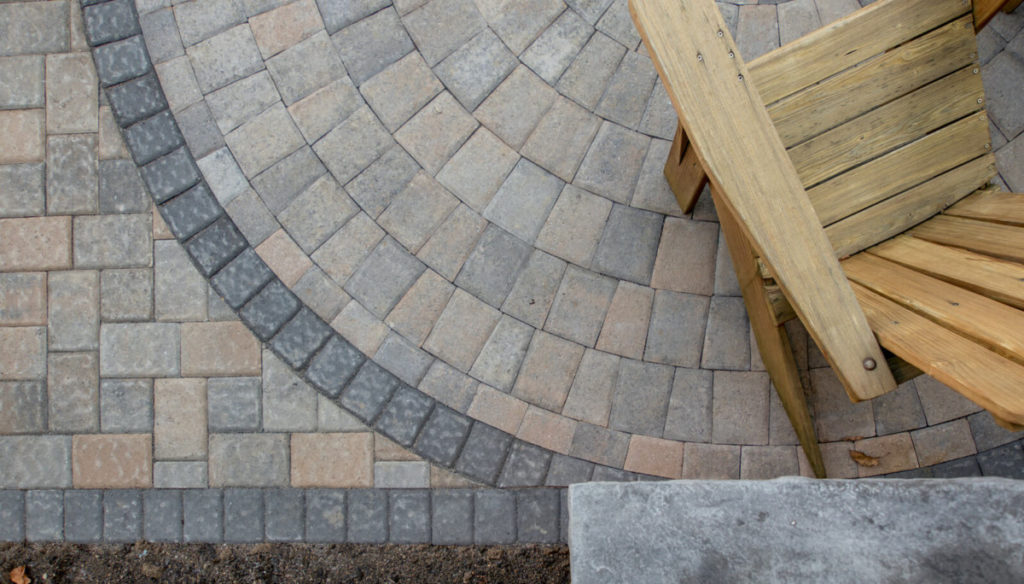
Why? Because properly installed hardscape is a beauty to behold. Here are a handful of inspiring examples of hardscape done well.
1. Driveway Design
This beautiful photo below features a paver driveway. Compared to some hardscape projects, this is a large and complex job.
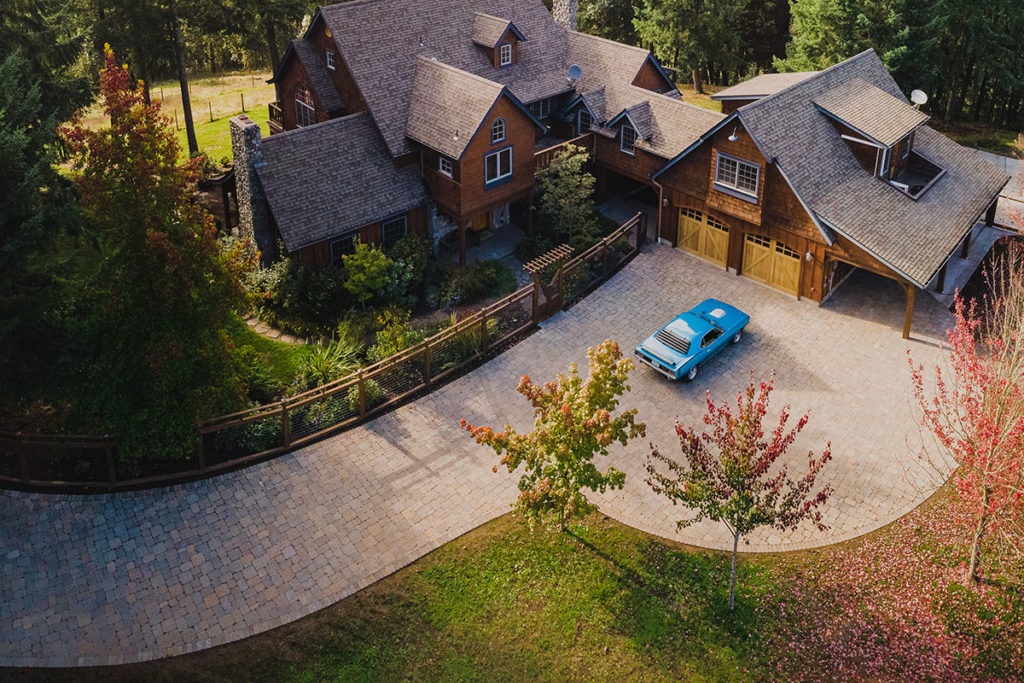
A hardscape driveway is more visually appealing than a standard concrete pour and, believe it or not, more structurally sound.
2. Retaining Wall
Another typical hardscape project is the retaining wall. Retaining walls come in all sizes: tall, short, or long. Stone retaining walls create planting areas or retain a slope to convert it to a flat yard space.
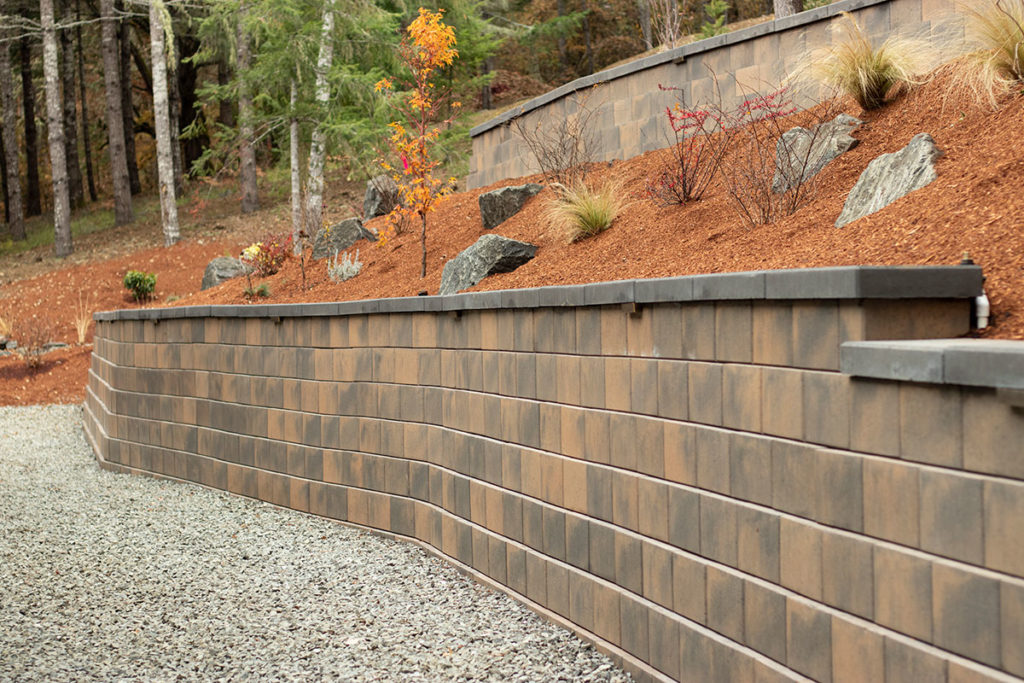
Some people stack cheap cinder blocks from their hardware store and call it a retaining wall. That’s not what we’re describing. When we say “retaining wall,” we mean a sturdy wall built using purpose-built, properly reinforced concrete block.
If you’re interested in building a retaining wall of any size, check out our DIY tutorial How to Build a Retaining Wall.
3. Patio
A paver patio is a low-maintenance and versatile patio option that’s a great alternative to a slab of concrete—or what many call a “helicopter pad.”
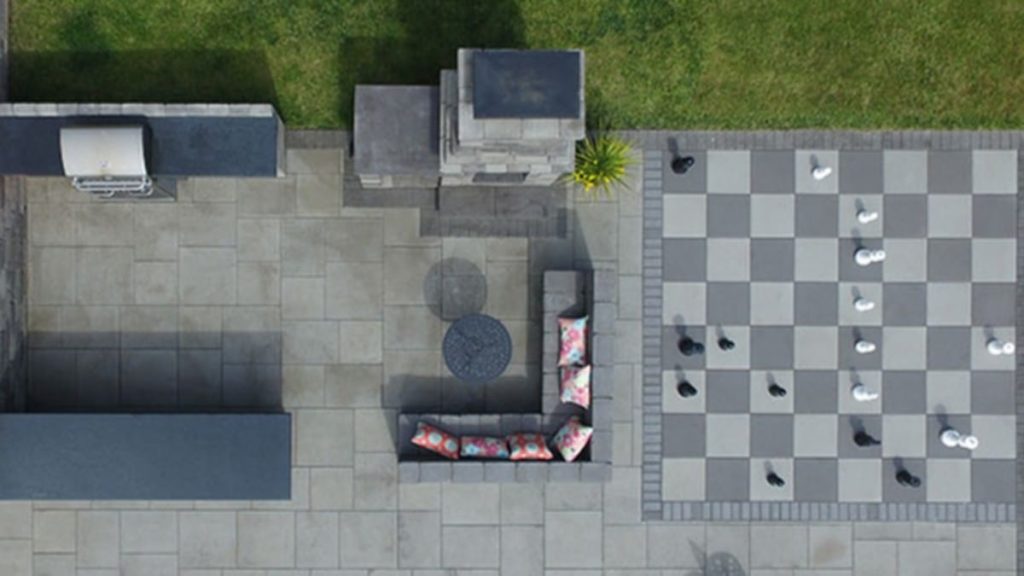
Paver patios can be square, circle, or curved. That’s why we say it’s a versatile option—because you can lay it in any shape to fit your landscape. As you can imagine, we’ve seen all shapes and sizes by now.
If you’re interested in building a circle patio, check out our DIY tutorial How to Build a Circle Patio.
4. Planter box
Building a stone planter box is an easy weekend project that can improve the look of your yard and provide good drainage for your plants. Not to mention, there is nothing quite as satisfying as cultivating a garden in a planter built by hand.
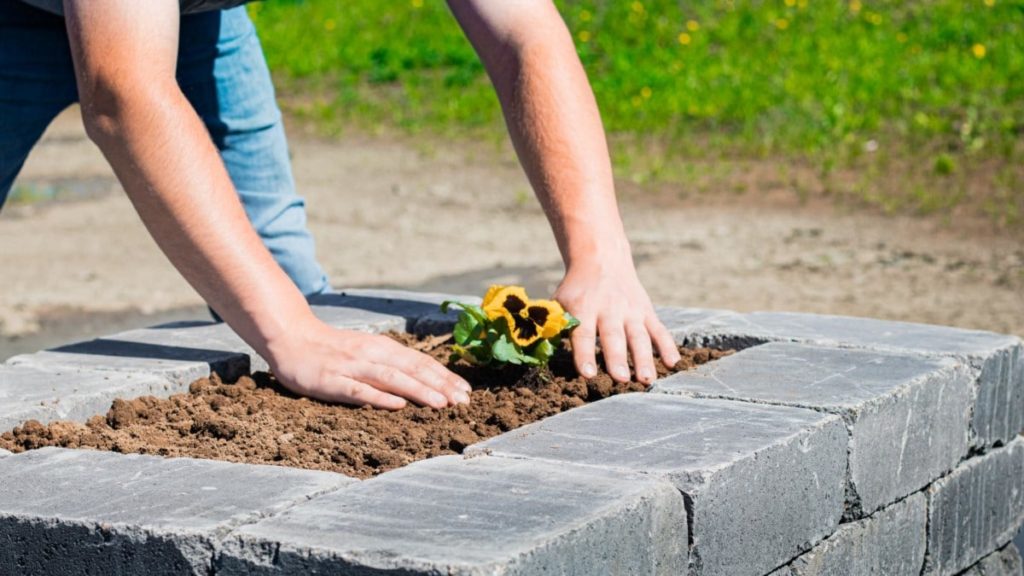
If you’re interested in building a stone planter, check out our DIY tutorial How to Build a Stone Planter Box.
5. Outdoor Firepit
Stone fire pits and fireplaces are a great way to enhance your outdoor living space and give you a reason to gather with family and friends.
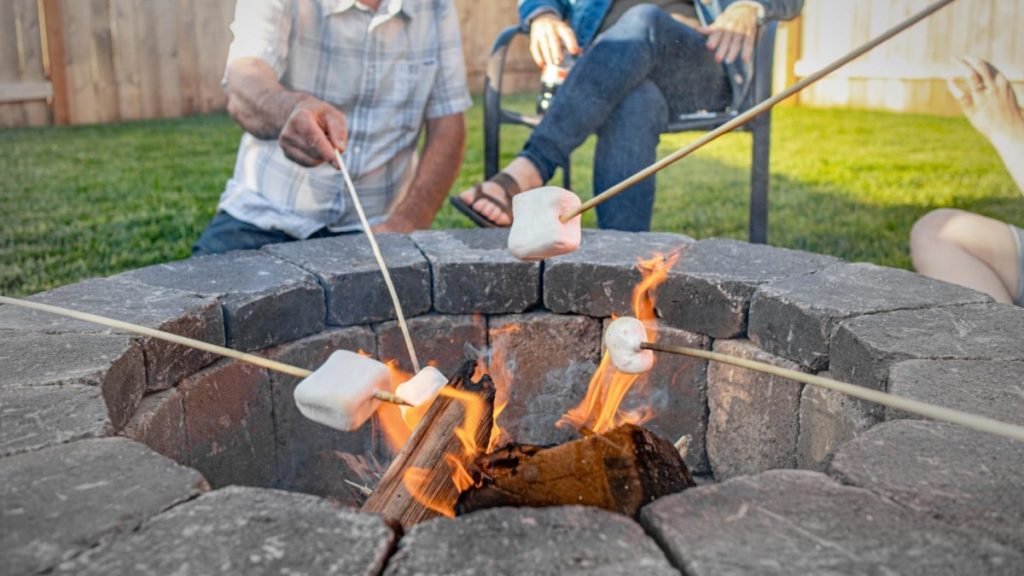
If you’re interested in building a fire pit, check out our DIY tutorial How to Build a Fire Pit.
6. Grill surround
Most gas grills come with wings, which provide some working space. The problem is that stock wings aren’t flattering and there’s usually not enough working space. That’s why a stone grill surround is so practical—it’s beautiful and functional.
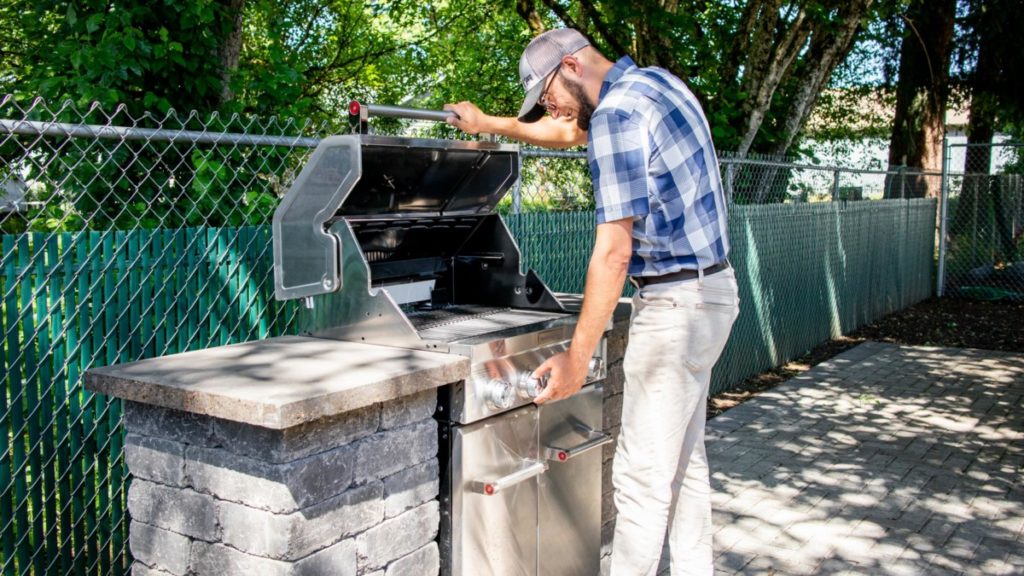
If you’re interested in building a grill surround, check out our DIY tutorial How to Build a Stone Grill Surround.
Working on hardscape
If you’re still reading, you’re probably wondering if hardscape is something you’re interested in installing on your property. We’ve found that while most homeowners are familiar with landscaping, the majority are unfamiliar with hardscaping. Not only are they unfamiliar, but they’re also intimidated.
Don’t let hardscape intimidate you! Just like mowing your lawn or riding a bike, the more you do it, the more familiar it becomes. Plus, we’ve set out to take the “hard” out of hardscaping with DIY video tutorials that explain everything.
There’s no doubt; hardscaping is hard work. Many people hire a contractor to help them complete some or all of their project while others like to work with their hands and are proud to do it themselves. Those DIYers typically choose to start (and finish) hardscape projects in spring or fall, or during moderate times of summer when the weather is beautiful.
If you are going to DIY, where do you start? First things first, get familiar with the products and tools you’ll need to get the job done.
Hardscape materials and tools
In order to complete a hardscape project, you’ll need hardscaping materials like gravel, sand, and pavers. You’ll also need tools like a hammer, level, compactor, and trowel, to name a few. Let’s break down what some of these terms mean (and why you should know them).
- Paver: a concrete paving stone made with aggregate and formed with compaction.
- Caps: a type of paver used to “cap off” a retaining wall or column.
- Slabs: a large paver that’s often used for patios or walkways.
- Base: the foundation layer of hardscape, consisting of dirt, geotextile, gravel, and sand.
- Gravel: a loose aggregation of rock fragments used a base.
- Sand: used as a top base layer directly under pavers and to fill joints.
- Joints: the spaces between pavers that are filled with sand for stability.
- Geotextile and geogrid: soil reinforcement and drainage materials.
- Edge Restraint: a plastic or concrete border that contains your hardscape.
- Compactor: a machine or tool used to compact or reduce the size of a material.
- Trowel: a hand tool used by masons for digging and scraping away unneeded material.
- Tile Saw: a saw used for cutting hard material, such as paving stones.
Hardscape construction terms
If you’re unfamiliar with hardscape or construction, you may be confused by some of the hardscape terms. However, if you know the following terms, you’ll be set.
- Grade: the direction of a slope, relating to water runoff.
- Border: the outermost course of pavers in your hardscape.
- Square: a perfect angle or corner.
- Tamp: to compact a base or paver with a hand or motor compactor.
- Screed: to scrape away.
- Miter: a jointed corner achieved by cutting.
Learn how to hardscape
Yes, you CAN do it yourself! We’ve developed video tutorials for homeowners and DIYers that explains hardscaping in plain terms that you can understand. To see all of our tutorials, visit DIYwithWI.com.
If you’re not sure where to start, read our articles on How to Be Prepared to Install Hardscape and 10 Common Questions People Ask Before Installing Hardscape.
If you have any questions, you can visit our Paving Stone Display at our Manufacturing Facility in Rickreall, OR. Or, give our team of hardscape experts a call at 503-623-9084.


